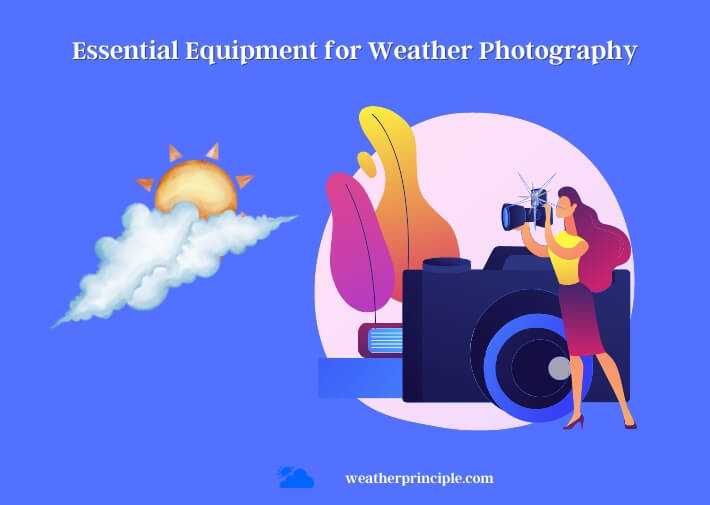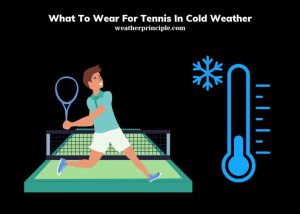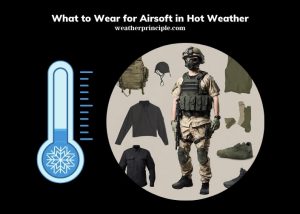Published on: May 6, 2023
Written by Shaown Khan / Fact-checked by Kader Khan
Weather photography and observation are fascinating fields that uniquely blend art and science. The natural world offers countless opportunities for capturing breathtaking images and making critical observations about our atmosphere. This article will explore the history, techniques, equipment, and applications of weather photography and observation, as well as delve into the opportunities and challenges that lie ahead.
History of Weather Photography and Observation
Early observations and methods
Long before the advent of photography, humans have been captivated by the weather. Ancient civilizations, such as the Babylonians, Egyptians, and Greeks, developed rudimentary methods for observing and predicting the weather. However, it wasn’t until the invention of the telescope in the 17th century that systematic weather observation truly began.
The evolution of photography and its impact on weather observation
The invention of photography in the early 19th century revolutionized the field of weather observation. Early weather photographers like Eadweard Muybridge and Louis Le Prince captured stunning images of clouds and other atmospheric phenomena. As photographic technology advanced, weather photographers were able to document more intricate details of the atmosphere, ultimately leading to a deeper understanding of meteorological processes.
Pioneers in the field
Over the years, many photographers and observers have made significant contributions to the field of weather photography and observation. Some notable pioneers include Wilson Bentley, who became famous for his intricate snowflake photographs, and Ansel Adams, whose landscape photography often featured dramatic weather elements.
Weather Phenomena
Cloud formations and classifications
A fundamental aspect of weather photography and observation is understanding cloud formations and classifications. Clouds are classified based on their shape, altitude, and composition. Some common types of clouds include cumulus, stratus, cirrus, and nimbus.
Atmospheric optical phenomena
Atmospheric optical phenomena, such as rainbows, halos, and sun dogs, occur when sunlight interacts with particles in the atmosphere, creating captivating visual displays. Photographing these phenomena requires a keen understanding of the underlying meteorological processes and the right camera settings.
Severe weather events and patterns
Severe weather events like thunderstorms, tornadoes, and hurricanes offer compelling subjects for weather photographers. However, capturing these events can be dangerous and requires thorough knowledge of weather patterns and safety precautions.
Essential Equipment for Weather Photography
Cameras and lenses
DSLR vs. mirrorless
Both DSLR and mirrorless cameras are suitable for weather photography. The choice ultimately comes down to personal preference and budget. DSLRs tend to have longer battery life and a wider selection of lenses, while mirrorless cameras are more compact and lightweight.

Lens selection
Choosing the right lens is crucial for capturing stunning weather images. Wide-angle lenses are ideal for capturing expansive landscapes and dramatic skies, while telephoto lenses allow photographers to zoom in on specific weather phenomena without getting too close.
Tripods and stabilizers
Tripods and stabilizers are essential for capturing sharp, well-composed images, particularly in low-light conditions or when using telephoto lenses. Invest in a sturdy tripod that can withstand windy conditions and is easy to set up and adjust.
Weather protection and accessories
Protecting your camera gear from the elements is crucial. Invest in a waterproof camera bag, rain covers, and lens hoods to shield your equipment from rain, snow, and dust.
Techniques for Capturing Stunning Weather Images
Composition and framing
Effective composition and framing can make or break a weather photograph. Use the rule of thirds to create visual balance and consider incorporating natural elements like trees, mountains or buildings to provide a sense of scale and context.
Camera settings for different weather phenomena
Different weather phenomena require specific camera settings to capture their true essence. For instance, when photographing lightning, a long exposure with a narrow aperture can create striking images. Experiment with shutter speed, ISO, and aperture to achieve the desired effect.
Timing and anticipating weather events
Timing is crucial in weather photography. Stay informed about weather forecasts, and plan your shoots accordingly. Some of the most captivating weather images are captured during golden hour or when storms are approaching or receding.
Post-processing techniques
Post-processing allows you to enhance and refine your weather images. Use editing software to adjust colors, contrast, and sharpness while maintaining the integrity of the original scene. Experiment with different techniques to create a unique visual style.
Weather Observation Techniques and Tools
Visual observation and note-taking
Visual observation remains a valuable technique in weather monitoring. Train your eye to detect changes in cloud patterns, wind direction, and atmospheric conditions. Take detailed notes to record your observations accurately.
Weather stations and instrumentation
Weather stations and instruments provide precise and scientific measurements of weather variables such as temperature, humidity, pressure, and wind speed. Consider investing in a personal weather station or accessing public stations for comprehensive data collection.
Citizen science and collaborative observation networks
Citizen science initiatives encourage individuals to contribute their weather observations to larger databases. Engaging in collaborative observation networks allows for the collection of extensive and diverse data, benefiting meteorological research and analysis.
Safety Considerations for Weather Photography and Observation
Weather-related hazards
Weather photography and observation can expose you to various hazards. Stay informed about the risks associated with different weather conditions, such as lightning, strong winds, or extreme temperatures. Always prioritize your safety and follow recommended guidelines.
Personal protective equipment
Invest in appropriate personal protective equipment, such as waterproof clothing, sturdy shoes, and protective eyewear, to shield yourself from adverse weather conditions. Carry a first aid kit and be prepared for unexpected situations.
Ethical considerations and responsible practices
Respect the environment and the subjects you photograph. Avoid disturbing wildlife or trespassing on private property. Practice responsible photography and follow ethical guidelines, ensuring minimal impact on the surroundings.
The Role of Weather Photography in Meteorology
Supporting meteorological research
Weather photography contributes valuable visual data to meteorological research. Images of cloud formations, severe weather events, and atmospheric phenomena help scientists understand weather patterns and improve forecasting models.
Enhancing weather forecasting accuracy
High-quality weather photographs provide visual evidence of weather conditions at specific locations and times. Meteorologists can use these images to validate and refine their forecasts, leading to increased accuracy and reliability.
Documenting climate change
Weather photographers play a crucial role in documenting the effects of climate change. Through their images, they capture the changing landscapes, altered weather patterns, and extreme weather events that highlight the impact of climate change on our planet.
The Impact of Technology on Weather Photography and Observation
Satellite and drone imaging
Satellites and drones have revolutionized weather photography and observation. Satellite imagery provides a global perspective, capturing large-scale weather systems, while drones offer a closer look at localized weather phenomena. These technologies have expanded our understanding of weather patterns and improved forecasting capabilities.
Remote sensing and data collection
Remote sensing technologies, such as weather radars and weather balloons, collect data from the atmosphere, enabling meteorologists to monitor and analyze weather conditions. These tools enhance weather observation accuracy and contribute to the development of more precise forecasting models.
Weather apps and online resources
The rise of weather apps and online resources has made weather information easily accessible to everyone. Weather apps provide real-time updates, forecasts, and interactive radar maps, empowering individuals to stay informed about weather conditions in their area. Online resources, such as weather forums and websites, offer a wealth of information on weather photography techniques, tutorials, and community engagement.
Building a Career in Weather Photography and Observation
Professional opportunities and niches
Weather photography and observation offer diverse career paths. You can work as a freelance photographer, contributing to weather-related publications or selling your images as stock photos. Other options include working for meteorological organizations, research institutions, or pursuing education and becoming a meteorologist.
Networking and industry events
Building a network within the weather photography and meteorology community is essential for career growth. Attend industry conferences, workshops, and exhibitions to connect with professionals, gain insights, and showcase your work. Collaborate with other photographers and meteorologists to expand your reach and knowledge.
Tips for creating a portfolio
A strong portfolio is crucial for showcasing your skills and attracting potential clients or employers. Curate a collection of your best weather photographs that highlight your technical proficiency, creativity, and ability to capture unique weather phenomena. Regularly update your portfolio with new and diverse images.
Weather Photography and Social Media
Sharing weather images on various platforms
Social media platforms provide a powerful platform for sharing your weather images with a wide audience. Use platforms like Instagram, Facebook, and Twitter to showcase your work, engage with fellow weather enthusiasts, and build a following.
Building a following and engaging with the community
Building a following on social media requires consistent and high-quality content. Engage with your audience by responding to comments, participating in discussions, and sharing your knowledge and experiences. Collaborate with other photographers and weather enthusiasts to create a vibrant and supportive community.
Tips for social media success
To succeed on social media as a weather photographer, consider the following tips:
- Use relevant hashtags to increase the discoverability of your posts.
- Post consistently and maintain a cohesive aesthetic.
- Engage with other accounts and participate in weather-related challenges or trends.
- Provide value by sharing educational content, behind-the-scenes insights, and unique perspectives.
Legal and Copyright Considerations
Copyright and licensing issues
As a weather photographer, it’s important to understand copyright laws and protect your intellectual property. Copyright automatically applies to your original images, giving you exclusive rights to use and distribute them. Consider registering your photographs with the appropriate authorities for added legal protection.
Navigating permissions and releases
If you plan to publish or sell your weather photographs, obtain necessary permissions and releases, especially when capturing images that include recognizable individuals, private property, or copyrighted materials. Familiarize yourself with model release forms and property release requirements to avoid legal complications.
Protecting your work
Protect your work from unauthorized use by watermarking your images, adding metadata, or implementing digital rights management (DRM) technologies. Monitor online platforms for copyright infringement and take appropriate action if your work is used without permission.
Weather Photography and Citizen Science
Opportunities for involvement
Citizen science initiatives encourage individuals to contribute their weather observations and photographs to scientific projects. Participate in weather-related citizen science programs, such as cloud identification projects or weather data collection initiatives, to contribute to scientific research.

How citizen science contributes to the field
Citizen science projects enhance the quantity and diversity of weather data collected, allowing for more comprehensive analysis and improving forecasting models. Your photographs and observations can provide valuable insights and contribute to a better understanding of weather patterns and climate change.
Success stories and notable projects
Numerous successful citizen science projects have made significant contributions to the field of weather research. For example, the “CoCoRaHS” (Community Collaborative Rain, Hail, and Snow Network) project involves volunteers measuring precipitation in their local areas, providing valuable data for meteorologists and hydrologists. Another notable project is “Project Skyfall,” which focuses on documenting and analyzing severe weather events through photographs and eyewitness accounts.
Showcasing Weather Photography
Exhibitions and galleries
Exhibiting your weather photographs in galleries, museums, or local art shows allows you to reach a wider audience and receive recognition for your work. Look for opportunities to showcase your images in weather-themed exhibitions or collaborate with other photographers to organize joint displays.
Photography contests and awards
Participating in photography contests and awards can provide valuable exposure and recognition. Enter weather photography contests, both local and international, to showcase your skills and potentially win prizes or gain prestigious recognition within the photography community.
Creating a weather photography book
Compile your best weather photographs into a captivating book. Whether self-published or through a traditional publishing house, a weather photography book allows you to tell a visual story, share your passion for weather, and inspire others with your unique perspective.
Weather Photography Workshops and Tours
Types of workshops and tours
Weather photography workshops and tours offer invaluable learning experiences and opportunities for capturing extraordinary images. Choose from workshops that focus on specific weather phenomena, post-processing techniques, or general photography skills. Tours can take you to diverse locations with unique weather patterns, providing exciting opportunities for capturing stunning images.
Selecting the right experience
When selecting a workshop or tour, consider factors such as the instructor’s expertise, the itinerary, group size, and reviews from previous participants. Look for experiences that align with your interests, skill level, and desired locations, ensuring a fulfilling and educational experience.
Tips for making the most of your adventure
Make the most of your weather photography workshop or tour by:
- Researching the weather patterns and conditions of the location beforehand.
- Packing the necessary equipment and accessories for varying weather scenarios.
- Seeking guidance from experienced instructors and fellow participants.
- Embracing unexpected opportunities and being adaptable to changing weather conditions.
The Future of Weather Photography and Observation
Emerging technologies and trends
The future of weather photography and observation is shaped by emerging technologies. Advancements in camera technology, such as improved low-light performance and enhanced dynamic range, will allow photographers to capture even more stunning images. Additionally, the integration of artificial intelligence and machine learning may revolutionize weather analysis and forecasting.
The impact of climate change on weather photography
Climate change is altering weather patterns, leading to more frequent and intense weather events. Weather photographers play a vital role in documenting these changes, raising awareness, and advocating for climate action. The future will see weather photography increasingly focused on capturing the effects of climate change and conveying its urgency.
Challenges and opportunities
As technology advances, weather photographers and observers face both challenges and opportunities. Challenges include increased competition, ethical considerations, and the need to adapt to rapidly changing weather conditions. However, opportunities arise in terms of creative expression, scientific contributions, and using photography as a powerful tool for education and advocacy.
Conclusion
Weather photography and observation combine the beauty of art with the precision of science. They allow us to appreciate the magnificence of our atmosphere while contributing to our understanding of weather patterns and climate change. Whether you’re an enthusiast or aspiring professional, exploring the world of weather photography and observation opens up a world of captivating visuals and scientific exploration.
FAQs
What is the best camera for weather photography?
The best camera for weather photography depends on your specific needs and preferences. Both DSLR and mirrorless cameras have their advantages. Consider factors such as weather sealing, image quality, and compatibility with weatherproof lenses. Look for cameras that offer durability, reliable performance in various weather conditions, and the ability to handle challenging lighting situations.
How can I start a career in weather photography and observation?
Starting a career in weather photography and observation requires a combination of passion, skills, and dedication. Begin by honing your photography skills and understanding meteorological concepts. Familiarize yourself with weather patterns in your region and document interesting weather phenomena. Build a strong portfolio and actively engage in the weather photography community through social media, workshops, and collaborations. Consider pursuing formal education in meteorology or joining meteorological organizations to gain further knowledge and professional opportunities.
Are there specific qualifications needed to become a professional weather observer?
Qualifications to become a professional weather observer vary depending on the organization or institution you work for. Some positions may require a degree in meteorology or a related field, while others may provide on-the-job training. Strong observational skills, knowledge of weather instruments and measurements, and the ability to accurately record and report data are essential. Familiarity with weather observation protocols and standards, such as those outlined by the World Meteorological Organization (WMO), is also beneficial.
What are the risks involved in photographing extreme weather?
Photographing extreme weather events can pose significant risks to personal safety. Lightning, high winds, hail, and flooding can be hazardous. It is crucial to prioritize safety and take appropriate precautions. Always monitor weather forecasts and warnings, stay informed about local conditions, and have an emergency plan in place. Avoid placing yourself in dangerous situations, such as getting too close to tornadoes or lightning strikes. Use telephoto lenses to maintain a safe distance and consider seeking shelter or higher ground when necessary.



